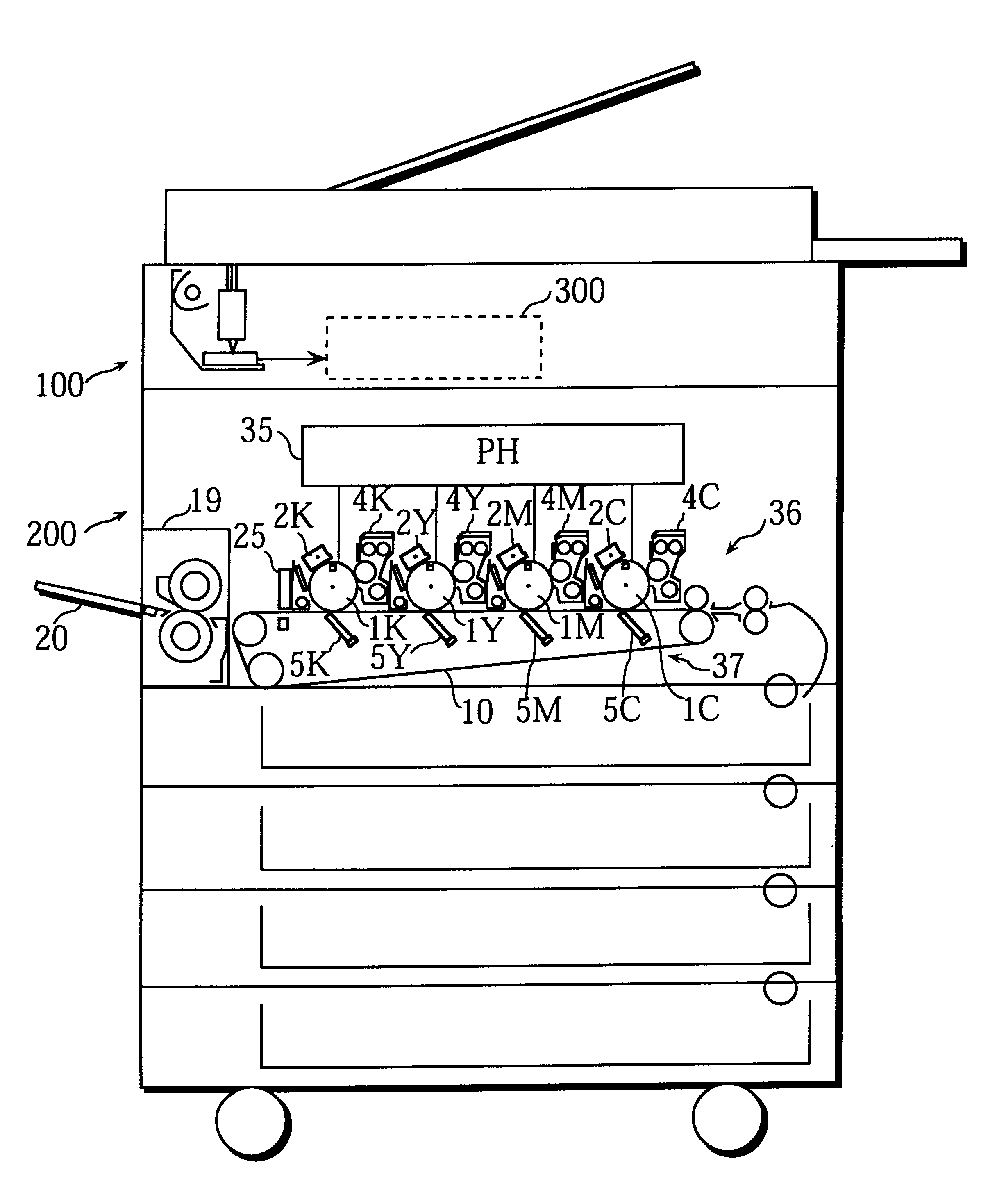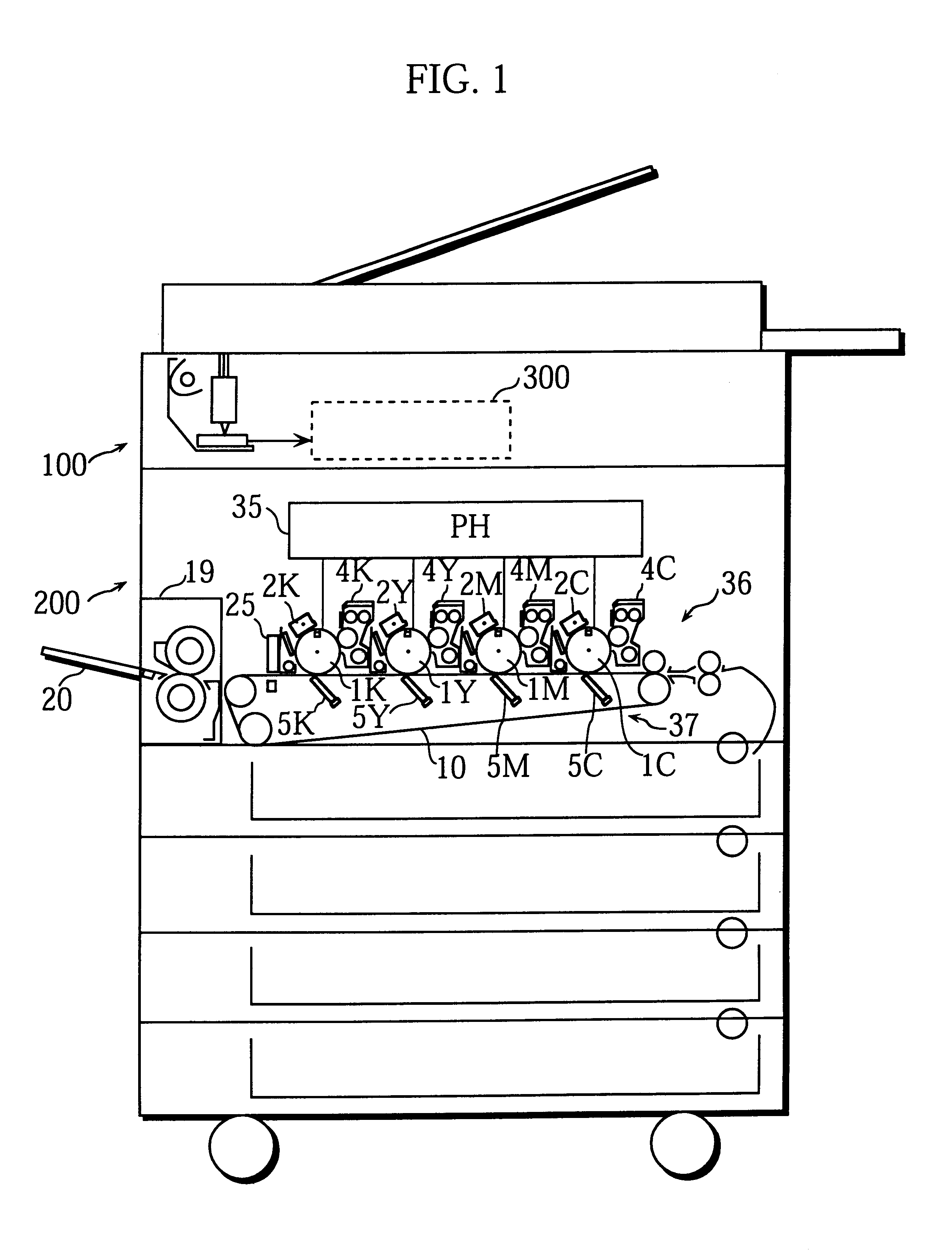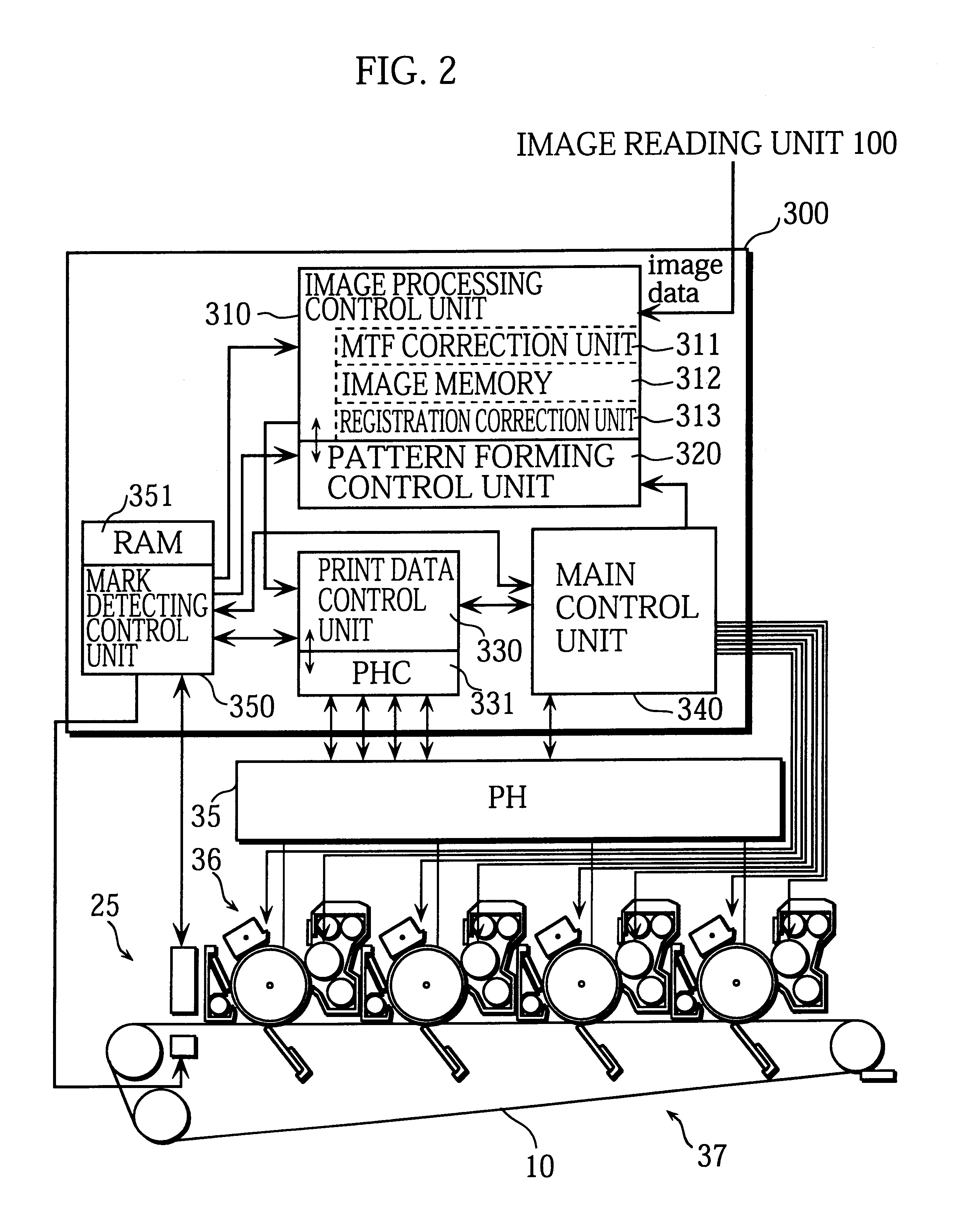Image forming apparatus that prevents color deviation of image
- Summary
- Abstract
- Description
- Claims
- Application Information
AI Technical Summary
Benefits of technology
Problems solved by technology
Method used
Image
Examples
first embodiment
(1) Construction of the Copier
FIG. 1 is a schematic sectional view of the copier of the present embodiment. The copier has four image forming units set in line above a transfer belt along its length and forms a color image by transferring images formed by the image forming units onto a recording sheet.
As shown in FIG. 1, the copier is composed of an image reading unit 100 and a printing unit 200. The image reading unit 100 reads an image of a document and the printing unit 200 reproduces the image read by the image reading unit 100 on a recording sheet by printing. These two units are controlled by a control unit 300.
The image reading unit 100 is a well-known device that reads an image of a document set on a platen glass (not illustrated) and obtains multivalued digital signals for red (R), green (G), and blue (B). The obtained multivalued digital signals are next converted into 8-bit gradation data for C, M, Y, and K in the control unit 300. The control unit 300 performs various pr...
second embodiment
In the first embodiment, the amount of correction calculated according to the correction approximation function is converted into the amount of address correction to be made in the image memory 312. In accordance with the amount of address correction, a pixel (or, a target pixel) is determined whether it is printed or not at the original position. Here, a target pixel refers to a pixel before correction. In the determining operation, a pixel is switched between on (printed) and off (not printed) in the first embodiment. In other words, correction is performed in units of pixels. According to this method, however, an image noise may occur. This is because pixels are switched between on and off at almost the same position in the main scanning direction over a plurality of scanning lines.
To avoid this problem, in the second embodiment, a target pixel is not simply switched between on and off when the image forming position is corrected for each reproduction color. To be more specific, ...
third embodiment
In the third embodiment, the amount of correction is calculated using a function that is obtained by superposing a predetermined auxiliary function on the correction approximation function obtained according to the method explained in the first embodiment. The processing for calculating the amount of correction using this function is explained in the third embodiment. The processing is performed with the aim of preventing noise streaks from appearing when images for the reproduction colors are superimposed. The noise streaks are caused by tiers appearing in units of pixels as described in the second embodiment.
A more detailed explanation about noise streaks is given, with reference to FIG. 11. FIG. 11 is a drawing to help explain why the noise streaks occur to a reproduced image. It should be noted here that the density distribution processing described in the second embodiment has not been performed for the example shown in FIG. 11. The reproduction color used in this example may b...
PUM
 Login to View More
Login to View More Abstract
Description
Claims
Application Information
 Login to View More
Login to View More - R&D
- Intellectual Property
- Life Sciences
- Materials
- Tech Scout
- Unparalleled Data Quality
- Higher Quality Content
- 60% Fewer Hallucinations
Browse by: Latest US Patents, China's latest patents, Technical Efficacy Thesaurus, Application Domain, Technology Topic, Popular Technical Reports.
© 2025 PatSnap. All rights reserved.Legal|Privacy policy|Modern Slavery Act Transparency Statement|Sitemap|About US| Contact US: help@patsnap.com



